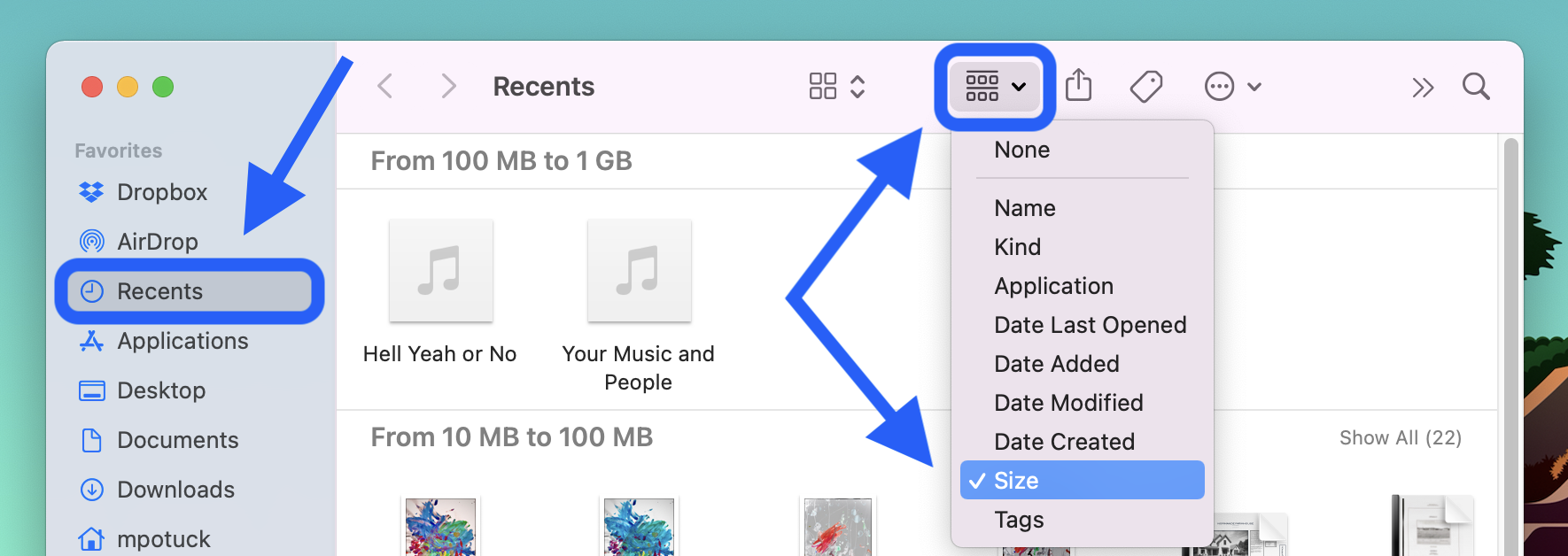Optimized Storage in macOS Sierra and later* can save space by storing your content in iCloud and making it available on demand. When storage space is needed, files, photos, movies, email attachments, and other files that you seldom use are stored in iCloud automatically. Each file stays right where you last saved it, and downloads when you open it. Files that you’ve used recently remain on your Mac, along with optimized versions of your photos.
* If you haven't yet upgraded to macOS Sierra or later, learn about other ways to free up storage space.
- Select the Windows disk, click Erase, choose the Mac OS Extended (Journaled) format, and then click the Erase button. (picture is below) Step 3: Shrink Mac partition to release more free space. Step 4: Create a new large Windows partition in the free space. Select the drive. Select the Partition tab; Click + to add a partition.
- Is your Mac dangerously close to running out of storage? Usually, you can go on a short disk cleaning spree and free up a lot of space quickly. But sometimes, it’s just not that simple. A while back, we talked about the somewhat baffling “Other” storage that can end up consuming tens—if not hundreds—of gigabytes of disk space.
Aug 30, 2019 If your PC is running low on free space, you might not be able to install important Windows updates, and your PC’s performance may be affected. Here are some ways to free up space so you can keep your PC up to date and running smoothly. These suggestions are listed in order, so start with the first one, see if that helps, and then continue to the next one if it doesn't. Jul 31, 2016 This could take up tens of gigabytes of space if you have a lot of emails. On a Mac with a large hard drive, this isn’t a big deal. But, on a MacBook with 128 GB of solid-state drive space, this can be a significant waste of space. Check How Much Space Mail is Using. RELATED: 10 Ways To Free Up Disk Space on Your Mac Hard Drive.
For the most thorough scan, grant the app Full Disk Access. Click “ Grant Access,” then click “ System Preferences ” on the pop-up. Now, click the lock in the bottom left, authenticate.
Find out how much storage is available on your Mac
Choose Apple menu > About This Mac, then click Storage. Each segment of the bar is an estimate of the storage space used by a category of files. Move your pointer over each segment for more detail.
Click the Manage button to open the Storage Management window, pictured below. This button is available only in macOS Sierra or later.
Manage storage on your Mac
The Storage Management window offers recommendations for optimizing your storage. If some recommendations are already turned on, you will see fewer recommendations.
Store in iCloud
Click the Store in iCloud button, then choose from these options:
- Desktop and Documents. Store all files from these two locations in iCloud Drive. When storage space is needed, only the files you recently opened are kept on your Mac, so that you can easily work offline. Files stored only in iCloud show a download icon , which you can double-click to download the original file. Learn more about this feature.
- Photos. Store all original, full-resolution photos and videos in iCloud Photos. When storage space is needed, only space-saving (optimized) versions of photos are kept on your Mac. To download the original photo or video, just open it.
- Messages. Store all messages and attachments in iCloud. When storage space is needed, only the messages and attachments you recently opened are kept on your Mac. Learn more about Messages in iCloud.
Storing files in iCloud uses the storage space in your iCloud storage plan. If you reach or exceed your iCloud storage limit, you can either buy more iCloud storage or make more iCloud storage available. iCloud storage starts at 50GB for $0.99 (USD) a month, and you can purchase additional storage directly from your Apple device. Learn more about prices in your region.
Optimize Storage
Click the Optimize button, then choose from these options.
- Automatically remove watched movies and TV shows. When storage space is needed, movies or TV shows that you purchased from the iTunes Store and already watched are removed from your Mac. Click the download icon next to a movie or TV show to download it again.
- Download only recent attachments. Mail automatically downloads only the attachments that you recently received. You can manually download any attachments at any time by opening the email or attachment, or saving the attachment to your Mac.
- Don't automatically download attachments. Mail downloads an attachment only when you open the email or attachment, or save the attachment to your Mac.
Optimizing storage for movies, TV shows, and email attachments doesn't require iCloud storage space.
Empty Trash Automatically
Telugu latest fonts. Empty Trash Automatically permanently deletes files that have been in the Trash for more than 30 days.
Reduce Clutter
Reduce Clutter helps you to identify large files and files you might no longer need. Click the Review Files button, then choose any of the file categories in the sidebar, such as Applications, Documents, Music Creation, or Trash.
You can delete the files in some categories directly from this window. Other categories show the total storage space used by the files in each app. You can then open the app and decide whether to delete files from within it.
Learn how to redownload apps, music, movies, TV shows, and books.
Where to find the settings for each feature
The button for each recommendation in the Storage Management window affects one or more settings in other apps. You can also control those settings directly within each app.
/macotherstorage-3f5c9635eade448b84fdccb26934cd3b.jpg)
- If you're using macOS Catalina, choose Apple menu > System Preferences, click Apple ID, then select iCloud in the sidebar: Store in iCloud turns on the Optimize Mac Storage setting on the right. Then click Options next to iCloud Drive: Store in iCloud turns on the Desktop & Documents Folders setting. To turn off iCloud Drive entirely, deselect iCloud Drive.
In macOS Mojave or earlier, choose Apple menu > System Preferences, click iCloud, then click Options next to iCloud Drive. Store in iCloud turns on the Desktop & Documents Folders and Optimize Mac Storage settings. - In Photos, choose Photos > Preferences, then click iCloud. Store in iCloud selects iCloud Photos and Optimize Mac Storage.
- In Messages, choose Messages > Preferences, then click iMessage. Store in iCloud selects Enable Messages in iCloud.
- If you're using macOS Catalina, open the Apple TV app, choose TV > Preferences from the menu bar, then click Files. Optimize Storage selects “Automatically delete watched movies and TV shows.”
In macOS Mojave or earlier, open iTunes, choose iTunes > Preferences from the menu bar, then click Advanced. Optimize Storage selects “Automatically delete watched movies and TV shows.” - In Mail, choose Mail > Preferences from the menu bar, then click Accounts. In the Account Information section on the right, Optimize Storage sets the Download Attachments menu to either Recent or None.
Empty Trash Automatically: From the Finder, choose Finder > Preferences, then click Advanced. Empty Trash Automatically selects “Remove items from the Trash after 30 days.”
Other ways that macOS helps automatically save space
With macOS Sierra or later, your Mac automatically takes these additional steps to save storage space:
- Detects duplicate downloads in Safari, keeping only the most recent version of the download
- Reminds you to delete used app installers
- Removes old fonts, languages, and dictionaries that aren't being used
- Clears caches, logs, and other unnecessary data when storage space is needed
How to free up storage space manually
Even without using the Optimized Storage features of Sierra or later, you can take other steps to make more storage space available:
- Music, movies, and other media can use a lot of storage space. Learn how to delete music, movies, and TV shows from your device.
- Delete other files that you no longer need by moving them to the Trash, then emptying the Trash. The Downloads folder is good place to look for files that you might no longer need.
- Move files to an external storage device.
- Compress files.
- Delete unneeded email: In the Mail app, choose Mailbox > Erase Junk Mail. If you no longer need the email in your Trash mailbox, choose Mailbox > Erase Deleted Items.
Learn more
- The Storage pane of About This Mac is the best way to determine the amount of storage space available on your Mac. Disk Utility and other apps might show storage categories such as Not Mounted, VM, Recovery, Other Volumes, Free, or Purgeable. Don't rely on these categories to understand how to free up storage space or how much storage space is available for your data.
- When you duplicate a file on an APFS-formatted volume, that file doesn't use additional storage space on the volume. Deleting a duplicate file frees up only the space required by any data you might have added to the duplicate. If you no longer need any copies of the file, you can recover all of the storage space by deleting both the duplicate and the original file.
- If you're using a pro app and Optimize Mac Storage, learn how to make sure that your projects are always on your Mac and able to access their files.
Need extra disk space on the Mac OS computer but don’t know how to get it? The system runs slowly due to most of the hard drive space taken up by installed applications? Try these methods to free up disk space on Mac OS X computer.

Here are some of the easies methods to free up disk space on your OS X system:
Method 1 – Rebooting the system
Sometimes just restarting you Mac computer would free up lots of extra disk space. It is especially true in case a long period of time has been passed since the last restart.
Many temporary and cache files – which have been stored in their specific locations on the hard drive – will be removed in the reboot process. That’s why OS X reboot could have an effect on the amount of free space on the hard drive.
Free Up Space On Mac

Just check the disk space before and after reboot to see the difference.
Method 2 – Emptying trash cans
The Trash in Mac OS X is like Recycle Bin in Windows operating system. The main idea behind them is sending deleted files to them instead of removing them from the disk altogether in case of user’s mind change. But sometimes some users forget to empty these cans – even after months or years – so that the deleted files actually get erased.
Macs could have multiple Trash cans. In fact, there is a Trash can for each of these apps: Mail, iMovie and iPhoto.
How To Free Up Space On Mac Startup Disk Apple Support
To empty the main Trash, just select ‘Empty Trash’ after right-clicking the icon for Trash in the Dock. This process could be done through Finder as well. Just select ‘Empty Trash…’ from finder menu bar.
A similar action could be done in each of the applications with their own Trash cans. A Trash option is offered in the menu which could be emptied so that the removed files would be deleted from the hard drive.
How To Free Up Storage Space On Your Mac - Apple Support
Method 3 – Deleting language files
Depending on the supported languages, many OS X apps have their own language files included with them. That’s because in case a user want to open and use the application in another language he/she could do so instantly.
Based on the number of included languages and other factors, these files might take up a disk space ranging from tens of MBs up to hundreds of MBs on the Mac computer hard drive.
Perhaps you don’t need any of these extra languages and just need the program to run on the default language (which is most likely English). In this case, removing these files would be one of the best solutions for enabling an extra amount of disk space most needed for other purposes.
In order to make this unnecessary files removal process much simpler, you could install and run a software made specially for this purpose: Monolingual (download: http://monolingual.sourceforge.net).
How To Free Other Space On Mac Desktop
Please note that the program needs OS X version 10.11 (El Capitan) or higher.
Method 4 – iTunes backups removal
Free Up Space On Mac Startup Disk

Many users choose to save their backup files for their iOS devices (e.g. iPhone or iPad) through iTunes application. Although this might have some advantages over other alternatives – such as uploading backup files to iCloud -, but the main disadvantage is that a somehow large amount of disk space would be taken up this way, depending on the data size on devices.
In order to see the list of backups stored on the OS X powered computer please click on ‘Preferences > Devices’ after running iTunes application.
/where-to-download-free-paid-mac-apps/. Current backup files for an iPhone/iPad might be needed later. So keep them. But you could definitely delete the ones no longer required, such as backups for older smartphones or tablets you no longer have.
Method 5 – Uninstalling apps
It is obvious that each application installed on the system dedicates a certain amount of disk space for keeping necessary files and running.
So if there are some apps you no longer use, it is better to uninstall them. It is especially helpful for making extra disk space available if the uninstalled app is a game. And that’s because games usually take up a larger amount of hard drive compared to regular application due to large volumes of data needed for graphics and sound files.
Uninstalling could easily be done through a Finder window. From the sidebar, select the application you want to uninstall and drag it to the Trash.
Similar Posts:
Macbook Free Up Space
- Disk Drill Review & Pricing (Mac & Windows) You know how it feels if you lose an important file and recreating is not…
- BleachBit vs CCleaner Review & Comparison It’s very important to try and eliminate junk from your PC, and both BleachBit and…
- AOMEI Partition Assistant Review Many people want to use a standalone partition management software when they want to have…
- How to Remove Password in Windows 10 Windows 10 is easy to deal with because of its explicitly labeled icons and user-friendly…